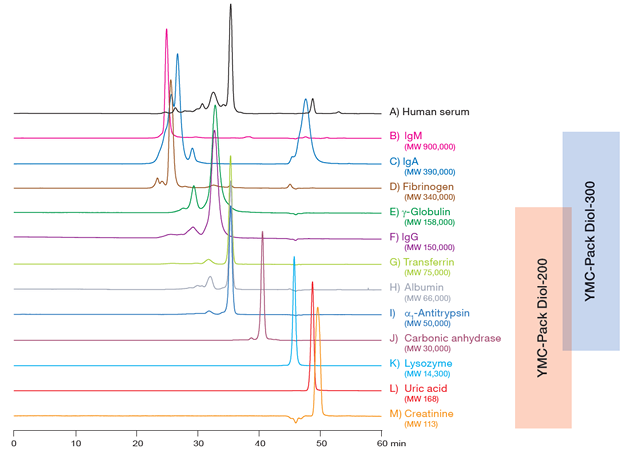Members Login

Channels
Special Offers & Promotions
Maximising the separation capacity by coupling two SEC columns

The use of only one SEC column brings a certain limitation due to its dedicated pore size and a limited column volume. By coupling two columns this hurdle can be overcome.
Doubling the column length implies a doubled column volume which results in improved resolution of peaks. Additionally, if using two columns with different pore size, the applicable molecular weight range can be increased significantly. In this application note, the analysis of plasma constituents using two coupled YMC-Pack Diol columns with different pore sizes is shown. By using this setup, the applicable molecular weight range can be extended by up to 700 kDa.
Introduction
Size exclusion chromatography (SEC) separates analytes based on their hydrodynamic radius. However, since the hydrodynamic radius is related to the molecular weight (MW) of the analyte (assuming that the analyte has a globular shape) in many cases, the analyte’s MW can be considered to be the separation parameter. Therefore, the pore size of a stationary phase plays a key role in SEC.
It determines a range over which the analytes’ molecular weight is separated by SEC. If the pore size is too small, the analyte is excluded from the pores and elutes without retention. Conversely, if the pore size is too large, the analyte diffuses throughout the pore and elutes with the same elution volume as other low MW analytes. Figure 1 shows the calibration curves for three columns with different pore sizes. This clearly shows the correlation: by increasing the pore size of the stationary phase, the resolution improves for higher MW analytes and increases for smaller MW analytes with reduction in pore size.
Please download the application note for further details.
Media Partners


